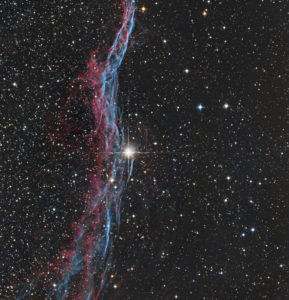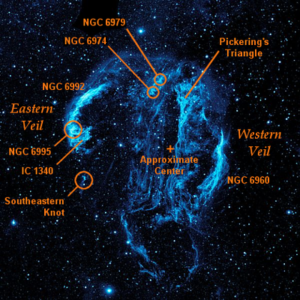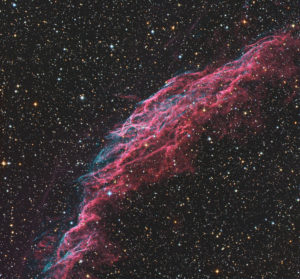 “Our home observatory in Tucson was dismantled, and the telescope equipment was moved to a very dark sky location in Pie Town, New Mexico. Our friends, John and Janet Evelan, own SkyPi Remote Observatory, and the equipment is set up and operational in one of their pod observatory buildings. I now operate the telescope completely by remote control over the internet from my home in Rhode Island! The technology is amazing, and with the help of John and Jan I can conduct great imaging under extremely clear and dark skies at an elevation of about 7900 feet.
“Our home observatory in Tucson was dismantled, and the telescope equipment was moved to a very dark sky location in Pie Town, New Mexico. Our friends, John and Janet Evelan, own SkyPi Remote Observatory, and the equipment is set up and operational in one of their pod observatory buildings. I now operate the telescope completely by remote control over the internet from my home in Rhode Island! The technology is amazing, and with the help of John and Jan I can conduct great imaging under extremely clear and dark skies at an elevation of about 7900 feet.
So, the telescope has now seen first light, and I have captured and processed my first image at SkyPi Observatory. The attached image is NGC 6960, the Bridal Veil Nebula. It is a section of the much larger Veil Nebula, located in the direction of the constellation of Cygnus, the Swan. The Milky Way runs right through Cygnus, and therefore this part of the sky is very rich in celestial wonders.
But let’s examine NGC 6960. It is part of a supernova remnant. About 15,000 years ago, an unknown star died in Cygnus. It had exhausted it’s nuclear fuel, and after successively fusing elements up to Lead, it could no longer exert outward pressure against the ultimate force of gravity. In a matter of seconds the star, which was about 8 times the mass of our own sun, detonated in an inconceivably monstrous explosion. This explosion produced more light than a billion stars. In fact, if our Cro-Magnon distant ancestors were looking at the night sky, they would have witnessed a new star visible even in daylight for a few months.
The shock wave of that star has been moving outward for the past 15,000 years at velocities of several million miles per hour. Today, the spherical bubble of that exploding shell is about 80 light years across. While it is extremely faint, several arcs of the shell are brighter, and can be imaged in visible light. NGC 6960, the Bridal Veil, is one of 3 major bright arcs. I don’t think the nickname of “Bridal Veil” needs much explanation- it is beautifully lacy and delicate.
When you examine the Bridal Veil closely, you can see a fantastic array of gas streamers twisting and turning. The ferocious winds of the explosion pushed out the star’s matter, and as it slammed into other dense gas in the vacuum of space, mixing turbulence created the wonderful shapes we see today. The various colors are created by ionized hydrogen, oxygen and sulfur.
The extremely bright star, 52 Cygni, is not part of the Veil Nebula. The nebula lies at an estimated distance of 1470 light years from us. 52 Cygni is only 201 light years away, close enough for astronomers to have measured an accurate parallex distance. 52 Cygni is interesting in it’s own right. Spectroscopic measurements indicate it really is a triple star system, although the star components are too close together to be imaged visually. The primary component is about 8 times the diameter of our sun and some 80 times brighter.
NGC 6960 is also referred to as the Western Veil. I am presently imaging NGC 6962, the Eastern Veil. That will be the subject of the next astroimage.”
Bob Rieger




